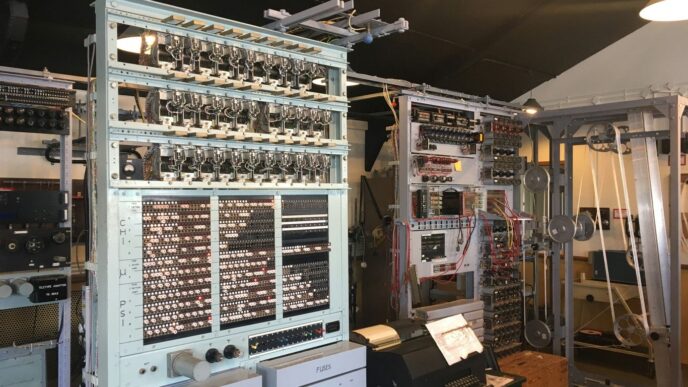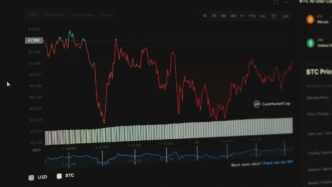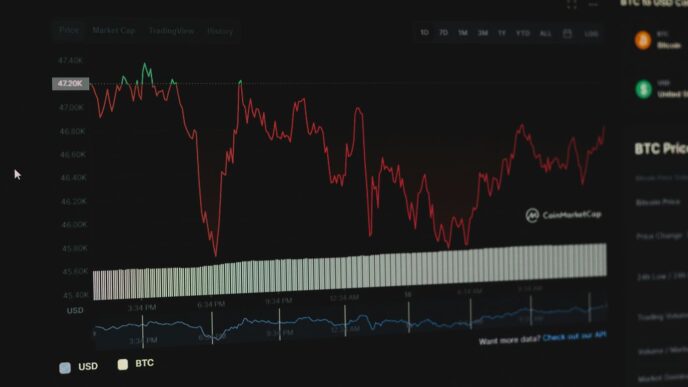Quantum Computing Breakthroughs Accelerate Progress
It feels like every week there’s some new development in quantum computing, and things are really starting to pick up speed. We’re seeing progress on multiple fronts, from making individual qubits more stable to figuring out how to build more reliable systems.
One Small Qubit, One Giant Leap for Quantum Computing
Scientists are constantly pushing the limits of what a single qubit can do. Recently, there’s been a record set for how long a qubit can maintain its quantum state – a measure called coherence. Think of it like keeping a spinning top perfectly balanced for as long as possible. The longer it stays coherent, the more calculations you can do before errors creep in. This latest achievement nearly doubled previous limits, which is a pretty big deal for building more capable quantum machines.
Fault-Tolerant Quantum Code Cracked at Last
One of the biggest headaches in quantum computing is dealing with errors. Qubits are super sensitive, and even tiny disturbances can mess up calculations. For a long time, the idea of a ‘fault-tolerant’ quantum computer – one that can correct its own errors – seemed like a distant dream. But now, researchers have developed an algorithm that can faithfully mimic a fault-tolerant quantum circuit using regular computers. This is a huge step because it means we can test and develop error-correction methods without needing a massive, perfect quantum computer first.
Quantum Computers Receive 10x More Efficient Upgrade
Efficiency is key, especially when you’re dealing with delicate quantum systems. A recent development involves a new type of qubit amplifier that’s ten times more efficient than older versions. This upgrade not only helps safeguard quantum states, which is vital for accurate calculations, but it also means we can potentially build larger and more powerful quantum computers without needing as much energy or complex cooling systems. It’s like getting a much faster engine for your quantum car, but one that also uses way less fuel.
Advancements in Quantum Hardware and Materials
It feels like every week there’s some new development in quantum hardware. It’s getting pretty wild out there. Researchers are constantly tinkering with new materials and techniques to build better quantum computers and sensors.
One big area of focus is making quantum bits, or qubits, more stable and less prone to errors. Think of it like trying to build a super delicate structure that can withstand a hurricane. Scientists are exploring all sorts of things, from using diamond defects to creating new types of superconducting circuits. The goal is to get closer to building quantum computers that can actually solve real-world problems.
Here are a few of the interesting things happening:
- ‘Magic States’ are getting a makeover: These are special quantum states used in computations. New methods are making them easier to create and, importantly, much less noisy. This means fewer mistakes in calculations.
- Visualizing the quantum world: Imagine needing to see what’s happening at the atomic level to discover new materials. A new visualization technique is helping scientists do just that, potentially speeding up the search for better materials for quantum devices.
- Toward fault-tolerance: Building a quantum computer that can correct its own errors is the holy grail. Progress is being made on this front, with new approaches to error correction that could make quantum computers more reliable and practical.
It’s not just about computing either. These advancements are also paving the way for new kinds of sensors and communication systems. It’s a really exciting time to watch this field grow.
Innovations in Quantum Communication and Networks
Experimental Quantum Communications Network Established
So, building a quantum internet is still a ways off, but things are definitely moving. Researchers have recently set up an experimental quantum communications network. Think of it as a tiny, early version of the internet, but instead of sending cat videos, it’s all about sending quantum information securely. This is a big deal because quantum communication promises a level of security that our current internet just can’t match. It uses the weird rules of quantum mechanics to make sure that any eavesdropping attempt is immediately obvious. Pretty neat, right?
Rudimentary Quantum Network Link Between Dutch Cities
Speaking of quantum networks, there was also news about a basic quantum network link being established between cities in the Netherlands. It’s not exactly a high-speed connection yet, more like a dial-up modem of the quantum world. But the fact that they can send quantum signals between different locations, even if it’s just a short distance, is a significant step. It shows that the technology is becoming more robust and can handle the challenges of real-world distances, even if those distances are currently quite small.
First Demonstration of Quantum Teleportation Over Internet Cables
And get this – scientists have managed to demonstrate quantum teleportation, not over some special, pristine fiber optic line, but over regular, everyday internet cables. This is huge! It means that the infrastructure we already have could potentially be used for quantum communication in the future. Imagine sending quantum information across the globe using the same cables that bring you Netflix. It’s still early days, and the process isn’t perfect, but it’s a really exciting development that could speed up the adoption of quantum communication technologies.
Quantum Tech News: Enhancing AI and Data Processing

Photonic Quantum Chips Are Making AI Smarter and Greener
It’s pretty wild how quantum tech is starting to show up in places you might not expect, like making artificial intelligence work better and use less power. We’re seeing new kinds of chips, called photonic quantum chips, that use light to do calculations. This approach could lead to AI systems that learn faster and are more energy-efficient than what we have today. Think about AI that can analyze huge amounts of data, like astronomical observations or complex medical scans, without needing massive data centers humming away constantly.
New Bayesian Method Enables Rapid Detection of Quantum Dot Charge States
Figuring out the exact state of tiny quantum bits, or qubits, is super important for building reliable quantum computers and sensors. Researchers have come up with a new method, using something called Bayesian inference, that helps them quickly and accurately detect the charge states of quantum dots. These quantum dots are like miniature artificial atoms that can hold quantum information. This new technique is a big step because it means we can get more precise readings from these quantum systems much faster, which is key for developing more advanced quantum devices.
Quantum Research Breakthrough Uses Synthetic Dimensions
Scientists are getting creative with how they process quantum information. One interesting development involves using ‘synthetic dimensions.’ Basically, instead of using the usual three spatial dimensions, researchers are creating artificial dimensions within their quantum systems. This allows them to arrange and manipulate quantum information in new ways, potentially leading to more efficient ways to perform complex calculations. It’s like finding a shortcut in a maze by creating a new path that wasn’t there before. This could really speed up how we handle difficult quantum problems.
New Frontiers in Quantum Research
The quantum world continues to surprise us with its hidden complexities and novel behaviors. Researchers are pushing the boundaries, uncovering new ways to understand and control quantum phenomena. It’s like finding new rooms in a house you thought you knew completely.
Physicists Uncover Hidden Order in the Quantum World
Scientists have recently found evidence of hidden order within quantum systems, specifically looking at deconfined quantum critical points. This isn’t your everyday kind of order; it’s a subtle arrangement that influences how particles behave under extreme conditions. Understanding this hidden order could lead to better ways to design quantum materials. It’s a bit like discovering a secret pattern in a complex tapestry that explains why it holds together so well.
Scientists Uncover Quantum Surprise: Matter Mediates Ultrastrong Coupling
In a fascinating twist, researchers have observed that matter itself can act as a go-between, mediating ultrastrong connections between particles of light. This is a big deal because stronger connections mean faster and more reliable quantum operations. Think of it like building a superhighway for quantum information instead of a bumpy country road. This discovery opens up new possibilities for how we can manipulate quantum states.
Controlling Quantum Motion and Hyper-Entanglement
New experiments are showing progress in precisely controlling the movement of quantum particles. Not only that, but they’re also creating states of ‘hyper-entanglement.’ This is where multiple properties of quantum particles become linked together. Imagine having several strings attached to a single kite, and when you pull one string, all the others move in a coordinated way. This level of control is key for building more sophisticated quantum devices and for performing complex quantum calculations.
Quantum Computing Reaches New Milestones
Quantum Computers Beat Classical Ones Exponentially
It’s getting real, folks. We’re seeing quantum computers actually start to outperform their classical counterparts in a big way. This isn’t just a little bit faster; we’re talking about exponential speedups. This means problems that would take traditional computers ages to solve could be tackled in a fraction of the time by quantum machines. A recent demonstration showed this happening, and it was unconditional, meaning it wasn’t just a fluke or dependent on specific conditions. It’s a huge step forward, showing that the theoretical advantages of quantum computing are starting to show up in practice.
Novel High-Fidelity Quantum Computing Gate Developed
Making quantum computers work reliably is a massive challenge. A big part of that is creating accurate ‘gates,’ which are like the basic building blocks for quantum calculations. Think of them as the logic gates in your regular computer, but way more delicate. Researchers have recently come up with a new type of quantum gate that’s incredibly precise. This means fewer errors creep into the calculations. This is super important because even tiny errors can mess up the whole result in quantum computing. The goal is to get these gates to be as close to perfect as possible, and this new development is a big move in that direction.
New Benchmark Helps Solve the Hardest Quantum Problems
Figuring out how well a quantum computer is doing and comparing it to others has been tricky. It’s like trying to grade a test when everyone’s using a different scoring system. Now, there’s a new benchmark that’s helping to standardize how we measure performance. This isn’t just about bragging rights; it’s about having a clear way to track progress and identify which quantum systems are best suited for tackling the really tough problems. This benchmark is designed to push the limits, helping us see how quantum computers stack up when faced with the most complex challenges out there. It’s a tool that will guide future research and development, pointing us toward solutions for problems we haven’t even been able to properly define yet.
IBM’s Quantum Computing Roadmap Unveiled

IBM recently laid out its ambitious plans for quantum computing, and it sounds like they’re really pushing the envelope. They’re aiming for what they call ‘quantum advantage’ by the end of 2026. That’s the point where a quantum computer can actually solve a problem that even the best regular computers can’t. Pretty wild, right?
IBM Quantum Nighthawk Processor Designed for Quantum Advantage
At the heart of this push is their new processor, the IBM Quantum Nighthawk. This chip is built with a special design to work hand-in-hand with their quantum software, aiming to hit that quantum advantage mark next year. It’s got 120 qubits, which are like the basic building blocks of quantum computers, and they’re connected in a way that allows for more complex calculations. Think of it like having more roads between cities – it makes traffic flow better and lets you build bigger things.
| Feature | Specification |
|---|---|
| Qubits | 120 |
| Couplers | 218 next-generation tunable couplers |
| Circuit Complexity | 30% more complex than previous processors |
| Max Two-Qubit Gates | Up to 5,000 |
Increased Qubit Connectivity for More Complex Circuits
This improved connectivity is a big deal. It means users can run more intricate quantum circuits, which are basically the step-by-step instructions for quantum computers. IBM says this allows for circuits that are about 30% more complex than what their older processors could handle, all while keeping errors low. This opens the door to tackling tougher problems that need a lot more of those fundamental two-qubit gate operations.
Quantum Advantage Tracker to Monitor Progress
To make sure everyone’s on the same page and to properly verify when quantum computers actually start outperforming classical ones, IBM is backing a new ‘Quantum Advantage Tracker’. It’s a community effort, with IBM and other groups contributing data and results. This tracker will help keep tabs on claims of quantum advantage, making sure they’re rigorously checked. It’s a good way to see how things are progressing and to encourage the best quantum and classical methods to be compared fairly. They’re hoping this will help the whole field move forward in a verifiable way.
What’s Next for Quantum Tech?
So, it’s pretty clear things are moving fast in the quantum world. We’ve seen a bunch of cool stuff happen recently, from making qubits more stable to figuring out new ways to use them for things like AI and finding new materials. It feels like we’re getting closer to those big, game-changing quantum computers, even if they’re still a ways off. Companies like IBM are making big promises about when we might see real quantum advantage. It’s exciting to think about what all these small steps could lead to down the road. Keep an eye on this space; it’s going to be interesting.














